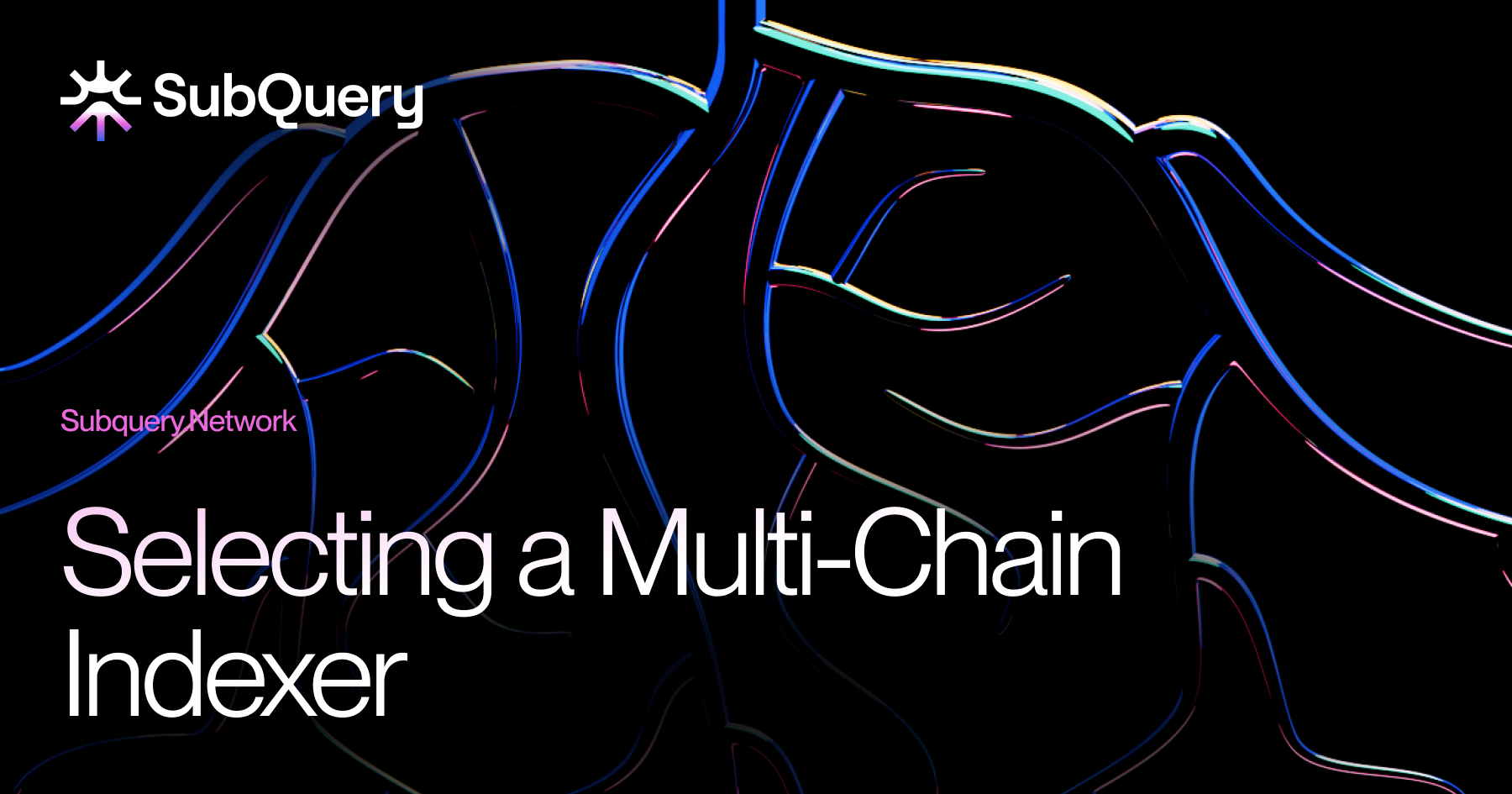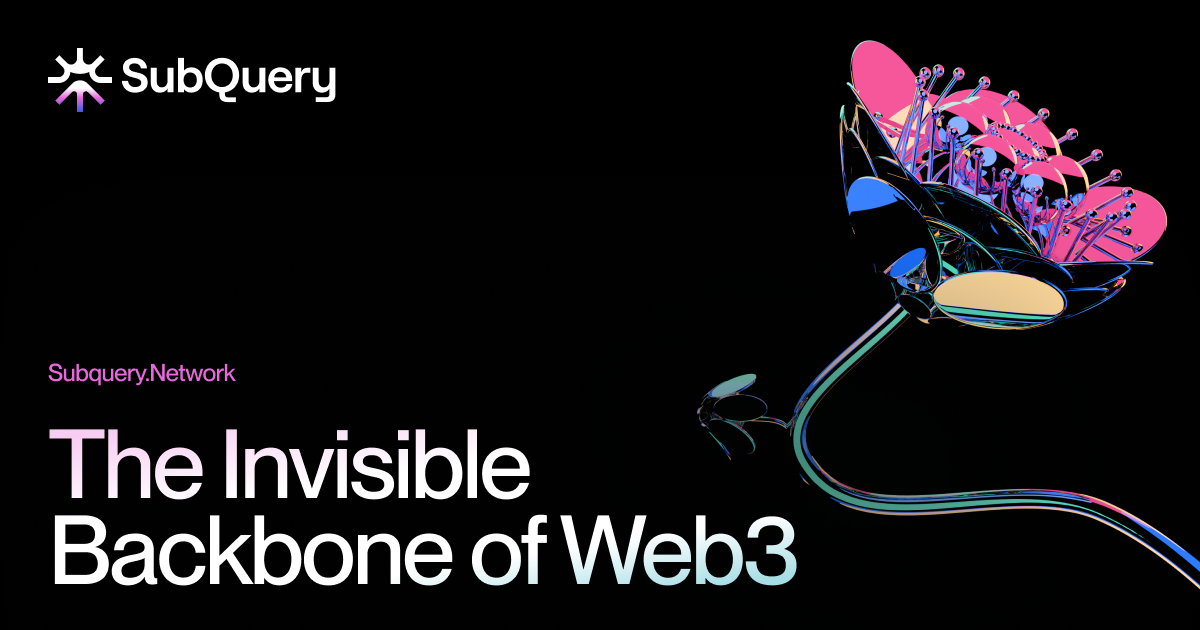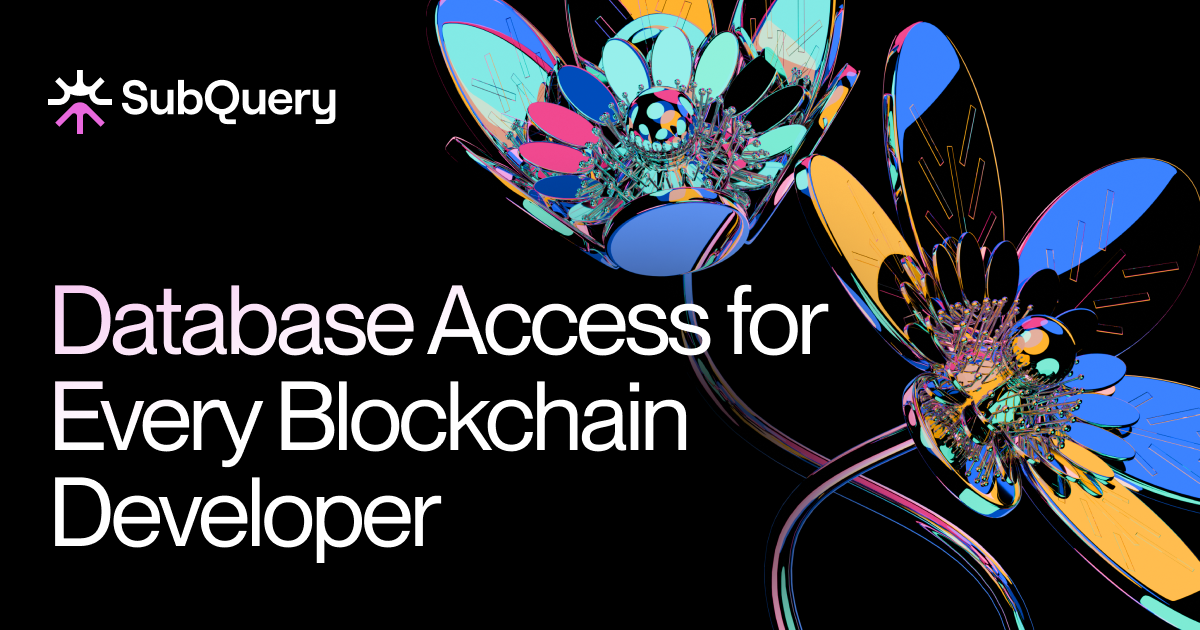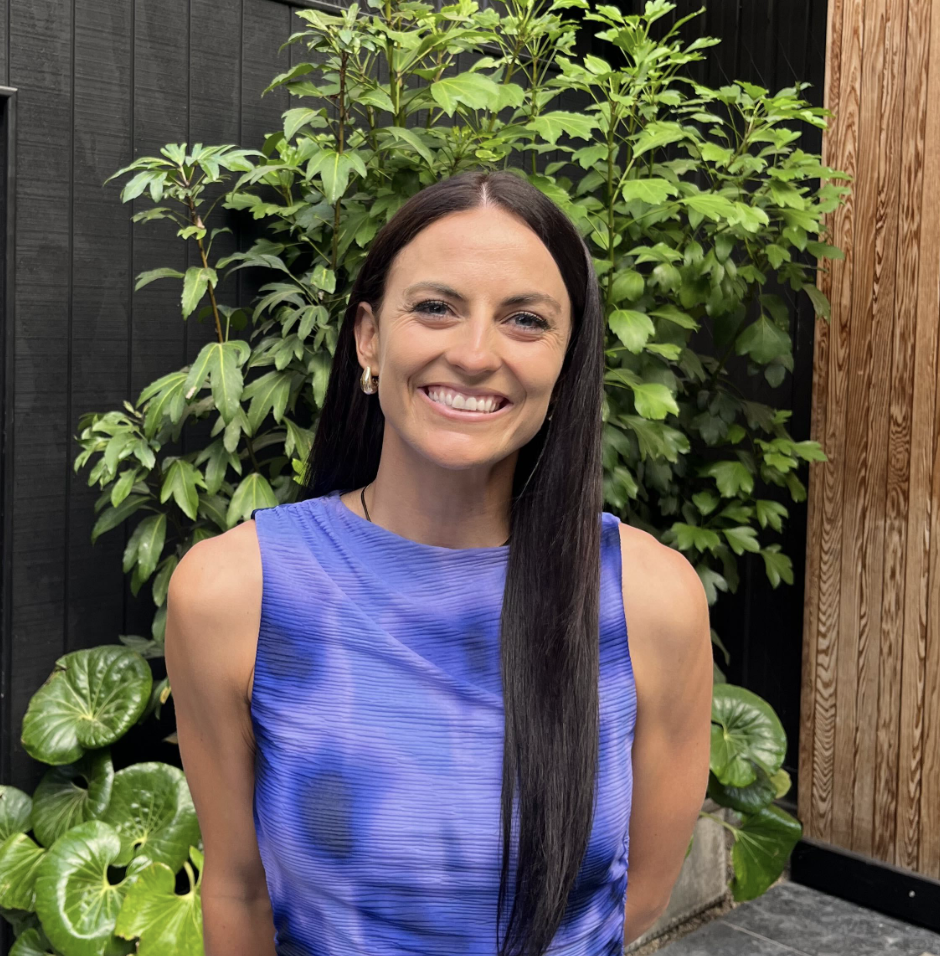The SubQuery Terra Onboarding Guide
For quite some time we have been developing and refining Terra support behind the scenes and testing it with key development launch partners (keep an eye out for announcements in the coming days). This prolonged period has allowed us to be extremely confident in the scalability, reliability, and features that SubQuery today brings to Terra. In this article we share a detailed developer guide and roadmap for all of the Terra community to use to solve their data indexing needs.
SubQuery is an open data indexer that is flexible and fast. Our open indexing tool is designed to help developers build their own API in hours, and it's designed to index chains incredibly quickly with the assistance of dictionaries (pre-computed indices). Our experience with customers across all verticals in Polkadot (wallets, networks, explorers, NFT, DeFi, scanners, etc) has helped us build this.
This is still in its early versions, and while we consider far beyond a "beta", we would appreciate it if any bugs can be reported to our team so we can address them quickly.
Why Use SubQuery?
The application ecosystem has thrived in Terra even though there is a serious lack of some key developer tools and infrastructure services. It's amazing to see, and a testament to the drive and ingenuity of the Lunatics in Terra. I most cases when we asked teams how they solved their data indexing needs, it was:
- Build your own solution: A custom implementation running by yourself built specifically for your app. But why reinvent the wheel? SubQuery is focusing on building a reliable and fast open indexer - we're here to save you time
- Designing smart contracts for queries: Some teams were even implementing custom quirks in their smart contracts to specifically allow for more advanced queries specific to their application logic.
At SubQuery we have an open-source SDK that is easy to use and lightning quick. It provides you with a standard GraphQL endpoint, or you can just query the postgres database directly. With it you can index a unique set of data from your own smart contracts that allows you to build a superior product that blows your competition out of the water! We give you flexibility to get the data that you need in the shape that works best for you.
Reliability is key, and you need a reliable and scalable platform to host it. SubQuery's managed service is an industry leading hosting solution for all customers that is serving hundreds of millions of daily requests to the biggest projects in Polkadot. We provide our enterprise level customers with services such as dedicated databases, redundant clusters, intelligent multi-cluster routing, and advanced monitoring and analytics. It will support your application when you are ready and will scale with you.
And finally, in a few months you'll be able to completely decentralise your SubQuery infrastructure with the SubQuery Network, the future of Web3 infrastructure. The SubQuery Network will index and service your projects data to the global community in an incentivised and verifiable way. It is designed to support any SubQuery project from any layer-1 network including Terra, so you can take advantage of the scale of the unified SubQuery Network from launch.
Installation Instructions
You'll first need to install a recent version of @subql/cli via npm i -g @subql/cli@latest
The best way is to start with our starter project, it contains a running project with an example of all mapping functions: This project indexes the following:
- BlockHandler: All blocks and their hash and height
- TransactionHandler: All transactions and their hash, height, and timestamp
- EventHandler: All smart contract transfer events and their hash, height, sender, recipient, and amount from a filtered smart contract address (bLuna)
- MessageHandler: All smart contract messages and their hash, height, contract, sender, and execute_msg data from a filtered smart contract address (bLuna)
SubQuery supports indexing Terra's smart contracts with both transaction and message subscriptions and handlers. You can see a working example of Smart Contract support in the starter project and read the documentation on the SubQuery University.
SubQuery's Terra implementation has been designed to operate almost identically to SubQuery's Polkadot support, and in a similar way to the Graph's approach. We've updated the SubQuery University to add Terra specific information to the general SubQuery documentation. You can start by following this excellent getting started guide here.
Deploying your Project to SubQuery's Managed Service
Although you will always be able to run your project in your own infrastructure easily, SubQuery's managed service now supports Terra project. Some of the biggest projects depend on SubQuery's enterprise level managed service and now you can too. As part of our launch partner agreement, we are providing you with 3 months free hosting.
You can follow the guide here to publish your Terra SubQuery project to our managed service. Please note that you must host your SubQuery project using IPFS rather than GitHub.
You can update your managed service project as much as you want. We even have a staging deployment slot to allow you to do seamless blue/green upgrades without any downtime. This staging slot can also be used to run a clean instance of SubQuery with a fresh database for complete background reindexing of your project. Customers usually link the staging slot to the staging/development versions of their applications.
Once deployed, you can access your project using the SubQuery Explorer, and make requests directly from your app to the provided GraphQL endpoint. Let us know if you would like us to enable more advanced features like GraphQL subscriptions, more complex queries, and aggregation functions.
Please notify us once you have deployed your project as we may need to assist with fine tuning the batch size to ensure that our Terra archive node runs well for your project.
SubQuery's Support for Terra
Today we are sharing the following:
- Advanced indexing of blocks, event
- Terra Dictionary: Pre-computed indices to dramatically reduce indexing time
- Full support for Terra in our free enterprise level managed service
- Intuitive documentation in the SubQuery University
In the coming weeks you can expect:
- A step by step learning course in the SubQuery Academy
- Full support for Terra in our decentralised SubQuery Network (you'll soon see a project in our current Frontier test network)
The launch of our beta support for Terra marks a significant milestone in our commitment to offer enhanced indexing tools for the Terra community to enable her developers to go further, faster. We are eager to get feedback from the community in order to improve our offering and increase our visibility as a trusted infrastructure partner for one of the fastest growing developer communities in Web3
James Bayly
Links
- Getting Started Guide
- SubQuery University (Documentation)
- Example Terra Project
- Managed Service
- Publish your own Terra Project to the Managed Service
About SubQuery
SubQuery is a blockchain developer toolkit enabling others to build Web3 applications of the future. A SubQuery project is a complete API to organise and query data from layer-1 chains. Currently servicing Polkadot, Substrate, Avalanche, and now Terra projects, this data-as-a-service allows developers to focus on their core use case and front-end, without needing to waste time on building a custom backend for data processing. The SubQuery Network proposes to enable this same scalable and reliable solution, but in a completely decentralised way.
Linktree | Website | Discord | Telegram | Twitter | Matrix | LinkedIn | YouTube
You might also like

Choosing the Right Indexer for Multi-Chain Deployment

The Invisible Role of SubQuery in Web3 Tech Adoption






